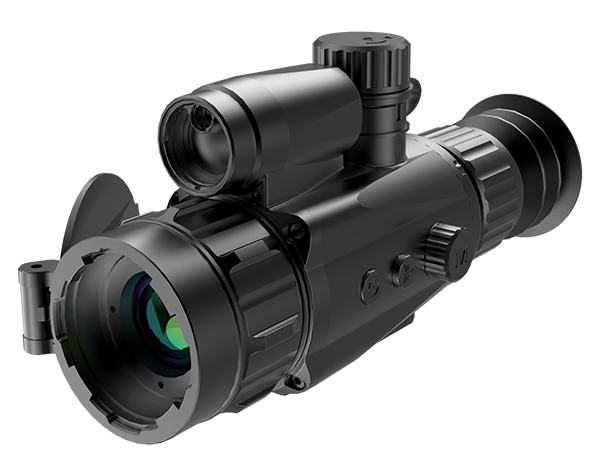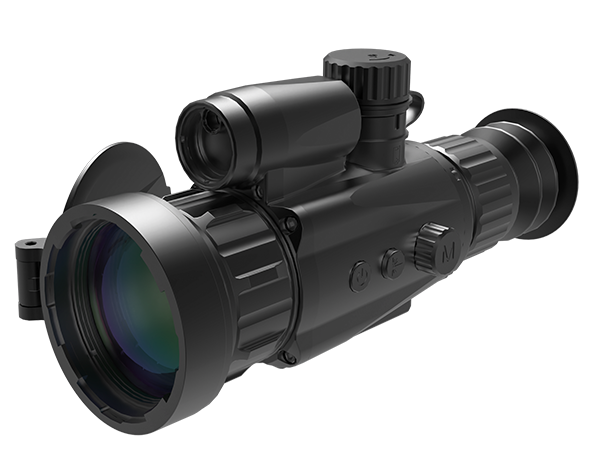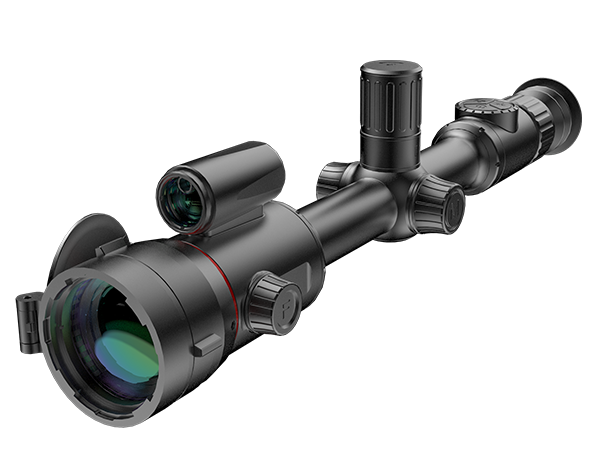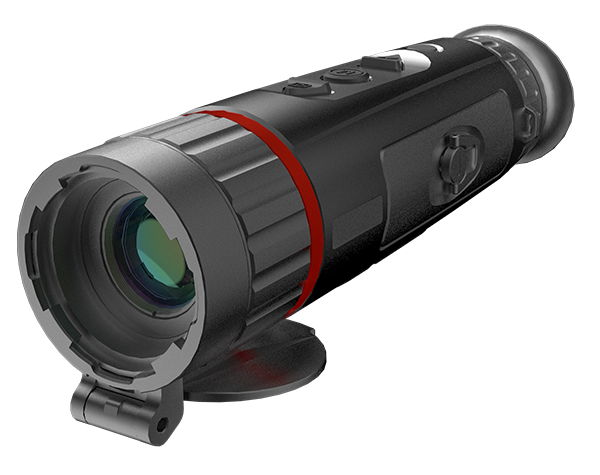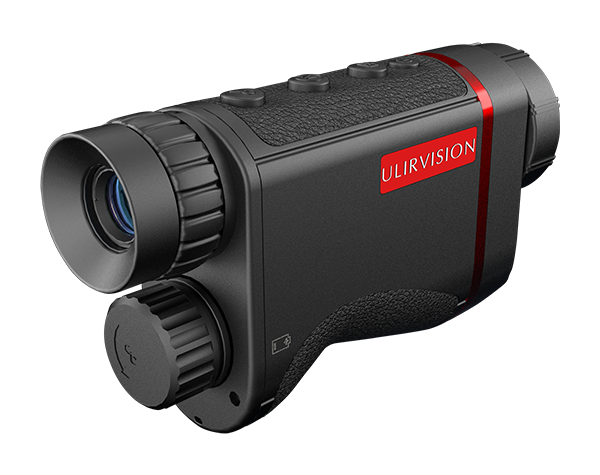Thermal Imaging Monocular Works for Wildlife Observation
Wild animals have always attracted human attention with their unique charm and mysterious lifestyle. Thermal imaging devices break through the darkness and complex environments, helping us to observe wild animals more comprehensively.
The working principle of thermal imaging devices: organism still emit heat at night or in low-light environments. The thermal imager detector can detect and record the subtle temperature differences in thermal radiation. After being enhanced and processed by the signal processing unit, these signals are converted into visible images and displayed intuitively on the screen.

Advantages of thermal monocular in wildlife observation
Break through the limitations of darkness
Night is the time when many wild animals are active, but for humans, darkness is an obstacle to observation. At the same time, many species have evolved to blend in with the environment in which they live, making it more difficult for observers to find them.
Thermal imaging monocular can work in completely dark environments, allowing us to observe the figures or activity tracks of wild animals clearly, whether in deep mountains and forests, grasslands, swamps, or other harsh environments
Keep hidden observation
As we all know, wild animals are very sensitive to intruders. Once they sense someone approaching, they may quickly flee or attack, which is not only not conducive to observation, but also a threat to the life and safety of the observer. When you have a thermal monocular, you can observe without emitting any obvious light or sound, maintaining a very high degree of concealment.
Support long-distance observation
The terrain in the wild is complex and varied, and there are many places that cannot be reached in person. Wild animals have already formed their own survival secrets under the laws of nature, and they may appear in every corner.
In addition to having an ultra-long detection distance, thermal imaging monocular is designed with a clear magnification function, which allows us to observe the true habits of wild animals from a long distance, ensuring our safety while not causing interference and damage to the animals and the surrounding environment.
ULIRVISION thermal monocular range up to 2600m. Types of models for your requirements
No loss of observation effect in harsh environments
Thermal imaging monocular can have a great performance in harsh weather conditions such as rain, snow, fog, and haze, or in complex and rugged geographical environments such as deep mountains and cliffs
The ULIRVISION Foresight series of thermal monoculars is equipped with a 12um high-performance uncooled infrared detector to generate high-definition thermal images with a resolution of 384x288. It is IP67 waterproof and dustproof, rugged and durable, and can still maintain super high performance in harsh environments
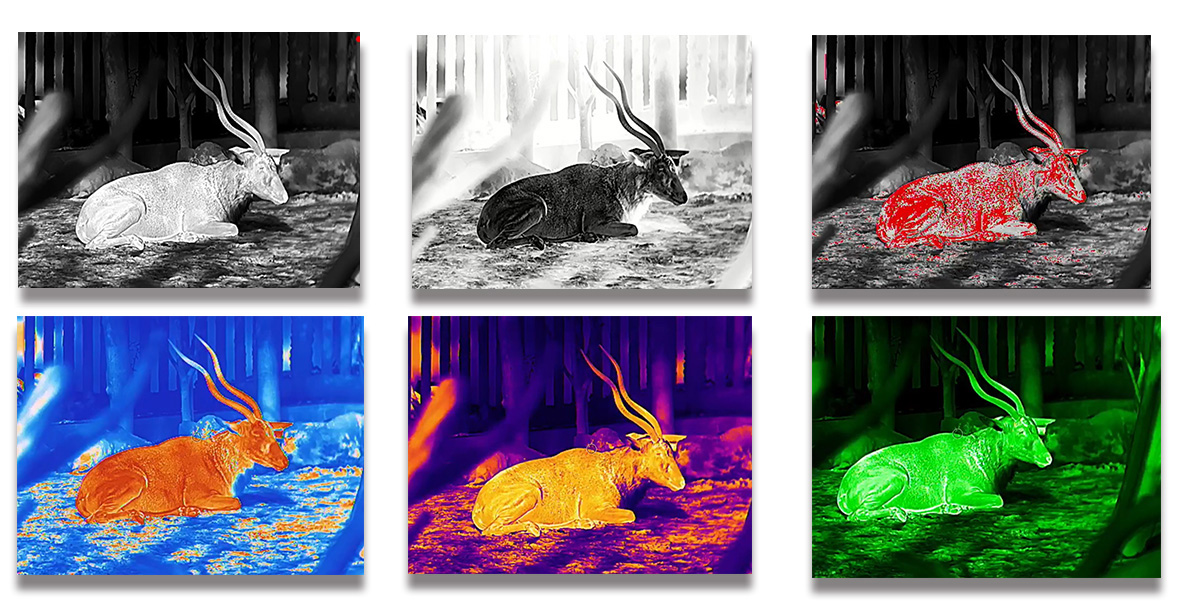
Applications of ULIRVISION thermal monocular
Wildlife protection
In the field of wildlife protection, thermal monocular play a vital role. Caretakers can use it to monitor the number, distribution and range of activities of wild animals, and promptly detect illegal hunting, poaching and other behaviors.
For example, in some wildlife reserves, patrol personnel are equipped with thermal monocular to strengthen night patrols of the reserves. They can observe whether there are traces of poachers without being noticed, and at the same time, they can better know the survival status of wild animals and provide a scientific basis for protection work.
Ecological research
Scientists can use thermal monocular to conduct ecological research and gain a deeper understanding of the behavioral habits, reproductive patterns and ecological needs of wild animals. Through long-term observation and recording, they can reveal the relationship between wild animals and the environment and provide decision-making support for the protection and management of natural resources.
Nature education
Thermal monocular also provide a new way to explore nature. Schools, nature conservation organizations, and science popularization institutions can organize students and the public to participate in night wildlife observation activities, allowing them to experience the magic and beauty of nature firsthand and raise people's awareness and consciousness of nature conservation.
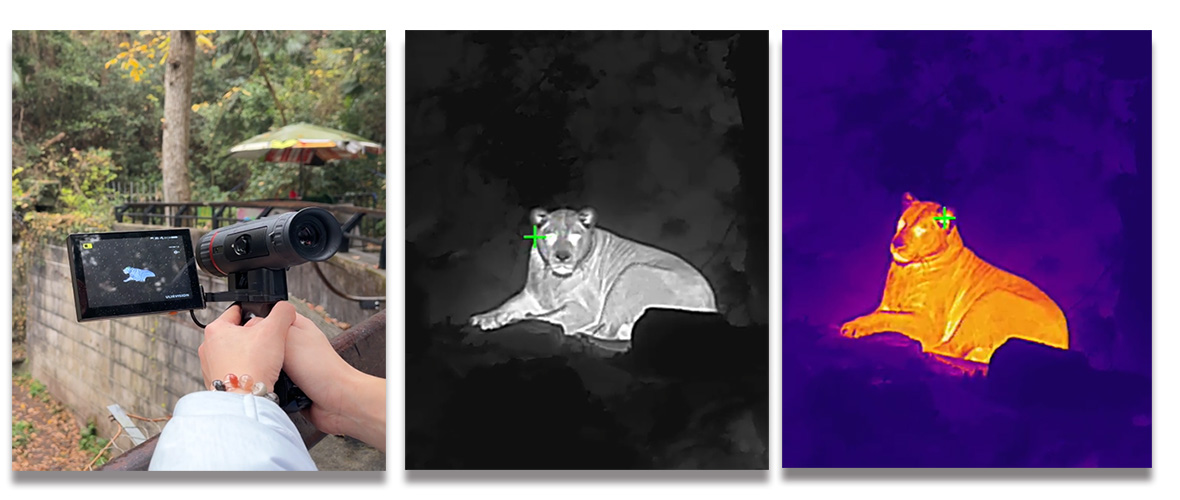
Choose the best thermal monocular for wildlife observation: 8 expert criteria
For nature enthusiasts and researchers, selecting the right thermal monocular requires balancing technical specifications with practical field needs. When choosing a thermal imaging monocular for wildlife observation, consider the following factors:
1. Sensor Resolution
- Higher Resolution: A higher resolution provides clearer images, allowing you to identify animals at greater distances. Prioritize 640×480 resolution for identifying small mammals (foxes, raccoons) at 150-300 yards
- Common Resolutions: Look for models with at least 320x288 pixels for decent quality. For example, choose 384×288 sensors for large game (deer, elk) observation
2. Detection Range & FOV
- Distance: Consider how far you need to see. Some monoculars can detect heat signatures from several hundred meters away.
- Wider FOV: A wider field of view allows you to scan larger areas quickly, which is beneficial in wildlife observation.
3. Lens Configuration & Magnification
- Magnification: 2-4× base magnification with digital zoom preserves image clarity
- Objective Lens Size: Larger lenses generally allow for better light collection, enhancing detection range. 50mm lenses optimize light capture for dawn/dusk observations
4. Environmental Durability
- IP67 rating for wetland/riverine ecosystems
- -20°C to 50°C operational range handles extreme habitats
- MIL-STD-810G shock resistance protects against trail impacts
- Rugged Build: Ensure the monocular is built to withstand outdoor conditions, including moisture and impacts.
5. Battery & Field Readiness
Long Duration: Look for monoculars with extended battery life to avoid interruptions during long observation sessions. 8+ hour runtime (continuous use) for nocturnal studies. It will be better to support USB-C charging compatibility with power banks
6. Frame Rate & Refresh Speed
Frame Rate: A higher refresh rate (e.g., 30 Hz or more) ensures smoother images, which is crucial when tracking moving animals. Minimum. 30Hz refresh rate tracks moving animals smoothly; 60Hz models recommended for bird migration studies; avoid <25Hz devices causing motion blur during panning
7. Weight and Portability
- Lightweight Design: A lighter monocular is easier to carry for extended periods, making it more practical for field use.
- Ease of Use: Look for intuitive controls and features like digital zoom, image capture, and video recording capabilities.
8. Ergonomic Wildlife Features
- Image/video recording with timestamp for behavioral documentation
- WiFi/Bluetooth connectivity for real-time sharing
- Multiple color palettes (White Hot, Black Hot, Fusion) for habitat contrast

